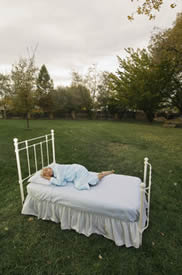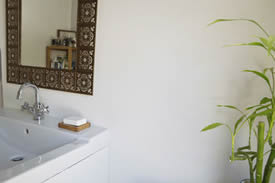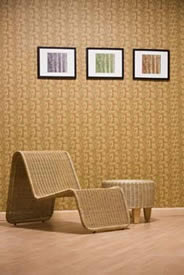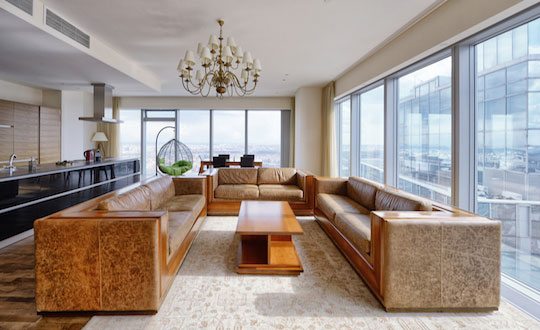Fabulous design. Cutting edge looks. Interesting twists in color, fabric, and texture. These are all elements inherent in design that's ecologically sound. Yes, your creativity can have free reign even as you make choices that help protect the planet. Increasingly, manufacturers are creating products that have minimal impact on the environment, whether because they're made from organically-grown cotton or because they're made with renewable resources. We think environmentally friendly design is so important that we recently added a Green Design lesson to the NYIAD Complete Course in Interior Design.
In our "Decorating Green" column we'll look at a sustainable, low-impact element of design in each issue of "Designer Monthly." We hope these articles will help us all help the planet and the many creatures that share it with us.
As we enter the new year, it's time once again for resolutions. And for many people, doing something about saving the planet is more important than losing those five pounds or watching less television this year.
But how exactly are we to do that, and how does green design fit in? The designer who knows about green design will have more choices to offer clients, especially as more people become committed to making the world a greener place.

Going green means much more than just using energy-efficient light bulbs. It includes making sure a home isn't leaking heat or air conditioning, and it means using paints that don't harm the environment. It means buying organic cotton bedding and buying furniture that is made of renewable resources. The good news is that there is a great deal that a designer and homeowner can do to help the planet.
Often a client will feel overwhelmed and confused by the choices in going green, and it's the savvy designer who will be able to help with a clear understanding of the options.
Essentially, when looking at “going green” there are three points to consider in choosing products. Green designers want:
— Products that use as few resources as possible in their production. We're all becoming more aware that almost everything we buy was manufactured, from armoires to area rugs, from coffee tables to coffee mugs. With just a few exceptions, such as hand-crafted pottery or hand-woven rugs — or that necklace your kid makes in kindergarten — the manufacturing process remains opaque to the buyer. But if we imagine a big factory in a foreign country spewing black smoke into the air, chances are we aren't far off the mark. And that black smoke takes up precious resources.
The designer who is willing to do a little research can ask if products are made in factories using fossil fuels, or using renewable resources. Does the factory use wind-generated energy? Does it adhere to local pollution control standards? In addition, products that are made closer to home will of course use fewer resources; the transportation of products made in far-off lands uses up a tremendous amount of energy.


—Products that don't harm (and ideally, even support) the people and environment from which they come. A major consideration in going green is the impact of product production on the environment and people where it comes from. “Fair Trade” is a term currently in popular use, which means that the company producing the product is committed to paying the workers a fair wage and ensuring their health and safety.
Fairtrade Certification means that a company has been government-certified that it is engaging in fair practices. These practices include making sure the workers aren't inhaling toxic fumes, that they have a say in the practices of the company, and that they get paid a living wage.

When looking at furniture, you can encourage the client to look for furniture that is recycled or that is made of renewable materials. Some manufacturers include a label certifying that the furniture is made of salvaged wood. And while we need all the trees we have, there are ways of farming wood that is sustainable; again, ask the manufacturer or check for certification. In both cases, the Rainforest Alliance is the largest certifier.
— Products that don't harm the home's inhabitants once they're in place. Finally, green products are those that are less likely to harm the people using them. For example, environmentally-friendly paints are known as “low-VOC” — meaning they have a low amount of volatile organic chemicals. Increasingly, sellers are becoming more knowledgeable about the “green quotient” of the products they're peddling; if necessary, you can go straight to the manufacturer to find out exactly what is in that sofa or area rug.
For more detailed information on choosing green furniture, we like this website:
planetgreen.discovery.com
By doing some research and paying attention to the rapid changes in green design, you can bring your knowledge to your clients, which in turn will make your own business a little greener.







